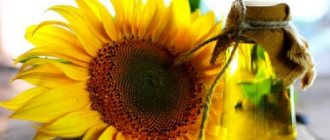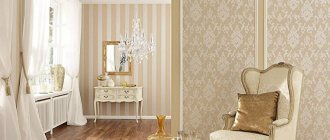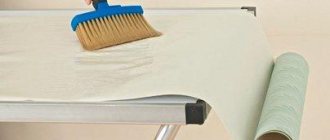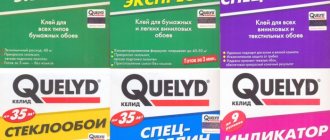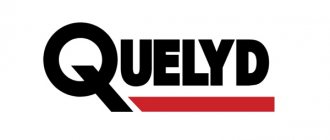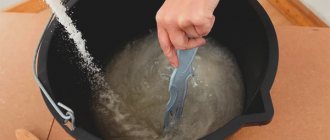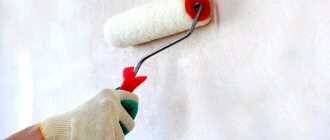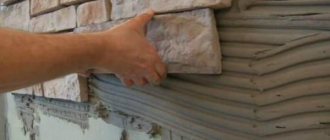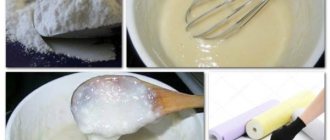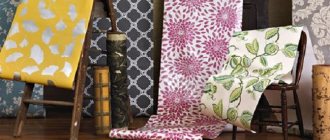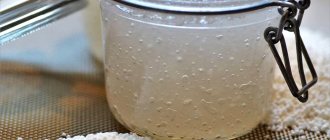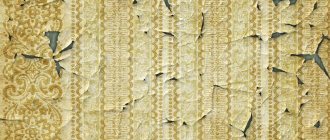Sooner or later, everyone encounters wallpapering, and everyone, as one, thinks that this is the simplest task. But when it’s time to get down to business, a lot of questions come to light. Among them, mainly, what wallpaper glue to choose and how to dilute it. This is the basis on which the entire quality of further work depends, and a thoughtful approach to its selection and practical application is the key to successful gluing.
Types and technical characteristics
How to choose the right wallpaper glue? First, let's look at what types exist and in what case they should be used.
There are many types of mixtures: universal, boostilate, drilling. If you understand each of these types, you can easily overcome the dilemma of how to choose the right wallpaper adhesive.
Universal PVA
For the most part, PVA is used for paper or vinyl wallpaper, which explains its popularity in the renovation industry. It is safe to use at home as it does not contain toxic substances. The composition of universal wallpaper adhesive ensures good adhesion of the canvases to the surface they cover. After gluing, its structure tolerates low temperatures well and is not afraid of moisture and fires.
Bustilat
Bustilat is also suitable for paper wallpaper. It contains latex, chalk, CMC thickener, water, preservatives or additives. Its distinctive property is white or grayish in color, but after drying the color is lost and it becomes transparent. The cost-effectiveness of the glue allows you to freely use it on a small budget. Wallpaper glued with bustylate adapts well to the wall. When using it, the appearance of yellow spots is excluded.
Drilling class KMC
A composition based on CMC is also effective when gluing paper wallpaper. It is a white or pinkish powdery material, odorless. The choice of adhesive for different types of canvases depends on the content of carboxymethylcellulose: the higher its concentration, the more viscous the mixture will be, which determines the success of its use with light or heavy wallpaper. It may take a long time to dry, but this is due to good adhesion. In addition, drilling glue does not leave stains on the outside of the wallpaper, prevents the appearance of mold fungi on the surface being pasted, and its composition is free of toxic substances.
Vinyl
This type of mixture is widely used for gluing vinyl wallpaper. Despite the name, it does not contain vinyl, but its contents can vary greatly from manufacturer to manufacturer. Good manufacturers make vinyl adhesive based on methylcellulose, because it penetrates well into the surfaces being glued, is resistant to low temperatures and is durable. Cheap analogues use KMC or GPC with additives as a base, but the adhesive properties of starch cannot be compared with methylcellulose, so it is not recommended to consider them as a good option.
Non-woven
Glue for non-woven wallpaper also contains MC and starch. Most of its types have good adhesion, and some manufacturers add polymer adhesive components, due to which the adhesive properties reach record levels. Additional components also include antifungal components and bactericidal additives that protect the surface from unwanted mold, or color indicators that help to correctly distribute the glue. It is distributed not on the canvas, but on the surface to be pasted.
Composition of the solution
Until recently, only one type of CMC glue was produced, the basis of which was carboxymethylcellulose, a product of cellulose processing (this substance in the abbreviation gave the glue its name). Now the product is produced by many domestic and even foreign brands, and each company includes various additives in it. Most often they are anti-caking agents and antifungal substances (fungicides):
- hydroxybenzene,
- potassium sulfate,
- aluminum sulfate,
- borax (sodium tetraborate),
- carbolic acid.
These substances, despite their synthetic origin, are not harmful to the body. They are especially important for cases where the walls have lost their ability to “breathe” when gluing vinyl or other durable wallpaper. Thanks to antiseptics and fungicides, fungus and mold will not grow on the walls.
For fiberglass and fabric coverings
To glue glass wallpaper you need dispersed glue. The characteristics of such a mixture are quite high, because glass wallpaper is heavy, and ordinary mixtures will not hold them. Important parameters are frost resistance, which allows it to be stored in rooms with low or fluctuating temperatures, as well as moisture resistance, due to which it can be widely used in rooms with high humidity. Most adhesives for glass wallpaper have an environmentally friendly composition, are protected from fungi and do not cause allergic reactions.
Rules
The variety of different materials from which different types of wallpaper are made requires special techniques for pasting them. However, there are a number of general rules on how to properly glue wallpaper:
- surface preparation;
- cutting wallpaper;
- applying glue;
- placement of trellises on the wall.
If all the preparatory steps are carried out correctly, then the whole process will be quick and easy, and the end result will be excellent.
Aids
Joint and border acrylic adhesives are used as gluing aids. The first is useful for correcting errors in the form of gaps between sheets or peeling off the edges of the canvas, but in such cases it can be easily replaced with bustylate, which has the same property of losing color after drying.
Acrylic border tape is intended for gluing decorative border tapes. It allows you to move the canvas freely and easily correct defects in the form of tears or bevels. However, it can be replaced with PVA or any adhesive composition that was used when gluing wallpaper.
Save time
A situation may arise when it is urgently necessary to update the interior of the room. The home handyman has a question: is it possible to glue wallpaper onto wallpaper? So they say I will gain time and be able to finish the work in one day.
Experienced painters believe that high-quality work can only be done if the walls are carefully pre-treated:
- Completely cleared of old material.
- The surface of the walls is leveled and degreased.
- The putty was carefully applied.
You can leave old wallpaper only in one case - if it fits tightly to the wall and its base is a light material and the color is light. But even in this case, there is no guarantee that bubbles will begin to appear during the work process, and after this the old trellises will begin to peel off.
It is unlikely that the owner of the apartment will want to have such a sloppy appearance. You will have to buy new wallpaper and completely remove all the old material.
As you can see, there are many more disadvantages in this “economical” option than advantages. Therefore, you should carefully weigh the pros and cons before deciding to stick new wallpaper on old ones.
Technological indicators
When choosing an adhesive, more attention should be paid to its base. Carboxymethylcellulose is the most common option and works well with many types of wallpaper. However, heavier fabrics will adhere reliably only with a high CMC content in the adhesive composition. More specialized adhesives use methylcellulose or modified starch. It is better to give preference to MC, saving yourself from unreliable gluing.
The base occupies most of the composition, a smaller part is PVA, and the smallest shares are bactericidal additives. Mixtures for heavier fabrics may contain equal parts of base and PVA.
For which wallpaper:
- Paper. Almost any wallpaper glue is suitable for them, since they are lighter than other types of wallpaper: glue with CMC, bustilate, drilling and even homemade paste.
- Vinyl. This fabric does not allow air to pass through, and when gluing it, conventional compounds do not work, since they simply do not dry. They are replaced by a special vinyl mixture based on methylcellulose with quick-drying properties. In a desperate situation, you can use universal products with high adhesion.
- Non-woven. For gluing such wallpaper, special compositions with methylcellulose or modified starch are also used, but they are applied to the wall.
- Glass wallpaper and textile fabrics. When working with them, only dispersed glue is used. It holds their heavy weight and is resistant to frost and moisture.
- Photo wallpaper. These are often sold with adhesive already applied to them. If this is not the case, vinyl analogues are used for gluing them.
Recommendations for use
Preparing walls and glue
Surface preparation is standard. Walls, ceilings, and floors should be cleaned of dust and dirt. Dry cleaning with a vacuum cleaner is preferable. If you had to use water, you should wait until the surface is completely dry.
The glue is diluted according to the instructions. An enamel bucket and water at room temperature are required. Add powder from the bag to a measured portion of liquid, as indicated on the package, and mix with a mixer. The composition is allowed to stand for a while: the components do not immediately absorb a sufficient amount of water, so the solution acquires homogeneity and consistency a little later.
If glue is also used as a primer, first prepare a more liquid solution.
Application rules
Pasting begins from the window, since here the canvases need to be joined especially carefully. The adhesive composition is applied to the section of the wall that is currently being pasted over. Use a roller or wide brush.
The cut piece of the canvas is applied to the wall, smoothed with a roller, expelling the excess solution to the side where the wallpaper is not yet glued. Excess is immediately removed with a damp cloth.
Applying glue is only allowed on non-woven wallpaper. Working with paper soaked in heavy glue is much more difficult.
Glue storage
Due to the specific nature of its work, wallpaper glue retains its properties for a long time. The diluted composition can be stored for up to 10 days if left in a cool place, for example, in the refrigerator. The composition is kept in an airtight container: in a glass jar with a tight nylon or screw-on lid.
Unopened glue packaging is good for 6–8 months from the production date. Then the composition loses up to 10% of its properties every month.
How to cook
To prepare the mixture you will need:
- Adhesive composition.
- Capacity. This could be a bucket or basin. The main thing is that there is enough volume.
- Water. To prevent lumps from forming in the resulting mixture, the water must be clean and its temperature must be 25 degrees.
- Stirring tool. To do this, they often use a stick or a construction mixer.
How to dilute glue:
First of all, you need to read the instructions on the packaging of the adhesive composition and find out the proportions in order to mix the mixture correctly. After this, you must first fill the container with water. It is necessary to stir the water until a funnel is formed, and pour the contents of the package into this funnel in a thin stream, without ceasing to stir. When the powder and water are combined in the required ratio, you need to leave the mixture to swell. This takes from 15 minutes to an hour, depending on the type of glue.
Wallpaper glue manufacturers
So, what glue is best for gluing wallpaper is indicated in the instructions and on the packaging. Another thing is that the price issue inclines in favor of choosing an analogue comparable to an expensive coating. Sometimes you have to purchase a suitable replacement, which is more affordable in terms of budget. However, you should be wise when choosing an adhesive.
To do this, we will describe in more detail the products of three well-known manufacturers in order to have an idea of the existing types of wallpaper adhesives.
Stamps
The market is teeming with the number of adhesives available. It would take a long time to list all the manufacturers, but it is worth noting several reputable brands.
The French company Kleo offers a range of types of glue. For example, Kleo Smart is used for gluing vinyl wallpaper, and Kleo Extra for non-woven wallpaper.
Quelyd is also a French manufacturer. He has both ready-made mixtures and powder, which can be stored in airtight packaging for an unlimited time. Compositions with an indicator, with fungicidal components and even docking agents are presented.
This is only a small part of the market, which offers many types of glue.
Vinyl wallpapers
Vinyl wallpaper became widespread in the late 80s and 90s of the last century. The growth in popularity and widespread use was facilitated by the novelty of the product on the post-Soviet market, the brightness and durability of the color, attractive appearance and... perhaps the most important thing at that time for the average consumer was their phenomenal wear resistance and the ability to wash off dirt with a damp cloth.
In order to save money, vinyl wallpapers, with the prospect of their possible “renewal” by washing, began to be used to cover all rooms in apartments indiscriminately - from children's rooms and bedrooms to walls in bathrooms. The practice of using vinyl wallpaper very quickly showed the fallacy and inadmissibility of such thoughtless use of “vinyl”.
It became difficult to breathe in the apartments; a specific smell from the wallpaper persisted in the rooms for a long time. On some surfaces, the wallpaper began to peel off and fall off in whole stripes, while on others, cracks began to appear between the joints of the wallpaper, which greatly spoiled the appearance of the room, especially if the wallpaper was dark in color.
The reason was ignorance of the features of using vinyl wallpaper. There was practically no information from foreign manufacturers about the product and the composition of the wallpaper adhesives that should be used for gluing this type of wallpaper.
A special version of trellises
Wallpaper with adhesive base deserves a separate discussion. The progress of their installation differs from traditional gluing. It is necessary to either carefully remove the protective film, or lightly moisten it (it all depends on the instructions supplied with the material), and then stick it to the wall.
Such models are more expensive than conventional trellises, and their texture is very thin.
Important! Before installing such wallpaper, it is necessary to carefully treat the surface of the walls.
Non-woven base
Gluing non-woven wallpaper is quite easy; there is no need to wait for the glue to soak in it. There is one immutable condition - you can only use those adhesives that are marked “non-woven”.
Among the compounds that provide good adhesion are:
- "Flizelin Moment";
- "Metylan";
- "Quelyd";
- "Exclusive Non-Woven";
- "Kleo"
Let's take a closer look at the positive and negative qualities of each of the above compounds.
